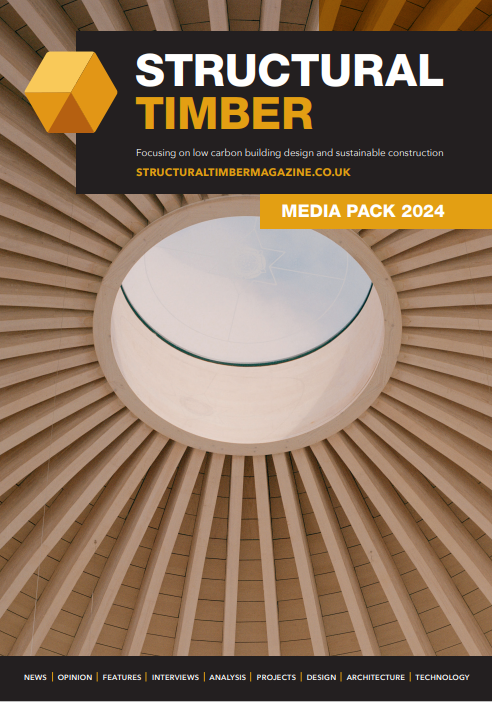Standing at 32.2m, the Forte building, a 10-storey CLT residential complex in Melbourne, completed by Lendlease in 2012 is the first Australian building to be made from CLT.
Worldwide interest in timber engineering and modular volumetric prefabrication goes on, with a 14-storey building completed in Norway utilising 3D volumetric prefabricated modules and the world’s tallest hybrid timber residential building, the 18-storey UBC Brock Commons student accommodation residential tower in Vancouver, Canada. This building comprises glulam columns and CLT floors and 2 concrete lift cores.
Taller buildings are also planned, including the 24-storey HoHo tower in Vienna, Austria, and a 34-storey residential tower planned in Stockholm.
KEY DRIVERS AND FACTS
There are many reasons for timber’s resurgence, but key market drivers include strong international demand for low- to medium-rise residential and commercial buildings due to demographic changes; demand for sustainable design and Green Building annotation through the use of environmentally sustainable materials which are renewable, recyclable and carbon-friendly; and low embodied energy.
Offsite prefabrication and integrated construction of timber buildings can reduce construction programs significantly. Other benefits include:
• Buildings can be disassembled and relocated at the end-of-life.
• Reduced site labour, lower environmental nuisance and disruption to local residents.
• Reduced weight of the overall building as timber is around a fifth of the weight of concrete. Consequently, timber buildings can weigh 50 percent less than a traditional reinforced concrete building, which makes timber a favourite in restrained construction sites with limited space.
• Decreased dead-load on the foundations which greatly reduces the construction cost, particularly in sites with pour ground condition.
• More architectural design flexibility offers more design options without sacrificing structural requirements.
• The natural warmth and timeless beauty of the timber structure provides a structural system and a decorative feature in the one element.
Moreover, new studies show that timber buildings cost less to construct compared to conventional buildings such as steel and reinforced concrete. For example, Commercial Building Costing Cases Studies – Traditional Design versus Timber Project by the Timber Development Association for Forestry and Wood Products Australia demonstrated that timber buildings would be 10-15 percent more cost-effective to construct compared to other conventional construction methods. For example:
• Commercial office building: -12.4 percent
• Aged care facility: -13.9 percent
• Apartment building: -2.2 percent
• Portal-framed industrial shed: -9.4 percent
OTHER FACTORS
The health and wellbeing benefits of timber construction and interiors in homes, businesses and educational facilities and hospitals are well investigated. Knowing that Australians generally spend 90 percent of their time indoors, the quality and character of the indoor environment has a great influence on the wellbeing of occupants.
Timber and wood also contribute naturally to moderate humidity by absorbing air moisture when the humidity in a space is high, and releasing it when the humidity is low. This moisture-buffering minimises the impact of pathogens and chemical interactions on human health.
Some studies such as Planet Ark’s Wood – Housing, Health, Humanity Report have also found that timber and wood product have a significant de-stressing effect and enhance psychological well-being of occupants. The warm inviting feel from wood and timber decreases blood pressure, heart rates and anxiety, according to the study.
Solid Wood Solutions
You can hear from leading suppliers in engineered timber at the upcoming Solid Wood Solutions conference on 05 July. Taking place at the impressive Oculus, part of Warwick University, the one-day conference and exhibition will reflect the swift upward trajectory that materials such as cross laminated timber (CLT) are now on as a sustainable, structural alternative to steel and concrete.
Solid Wood Solutions will shine a spotlight on pioneering projects through informative case studies presented by those who conceived and developed the buildings that are gaining global attention. This event presents a great opportunity to gain insight and network with those who are shaping the future of the engineered timber industry.
As engineered timber technology is one of the fastest growing offsite methods of construction, this event is designed to inspire through innovation. The event will consist of a bespoke exhibition of circa 25-30 companies from within the CLT, LVL and glulam technology sectors, plus complementary solutions such as SIPS and cladding/fenestration solutions with a conference of approximately 200 delegates.
Speakers include:
Giancarlo Torpiano - Structural Engineer at Arup
Jonathan Roynon - Associate Director at Buro Happold
Kelly Harrison - Associate at Heyne Tillett Steel
John Spittle - Sales Director for England & Wales at Wiehag
Nic Clark - Managing Director at KLH UK
Gavin White - Director at Ramboll
Kevin Flanagan - Partner at PLP Architecture
David Lomax - Senior Associate at Waugh Thistleton
Neil Eaton - Director at Berman Guedes Stretton Architects
Daniel Kreissig - Sales & Estimation UK at ZÜBLIN Timber
Robin Lancashirer - Senior Timber Frame Consultant TRADA
Darren Richards - Managing Director at Cogent Consulting
Penny Randell - General Manager at Ecological Building Systems UK
Robert Hairstans - Head of the Centre for Offsite Construction & Innovative Structures at Edinburgh Napier University
Book: For more information or to book tickets go to: www.solidwoodsolutions.co.uk/book













